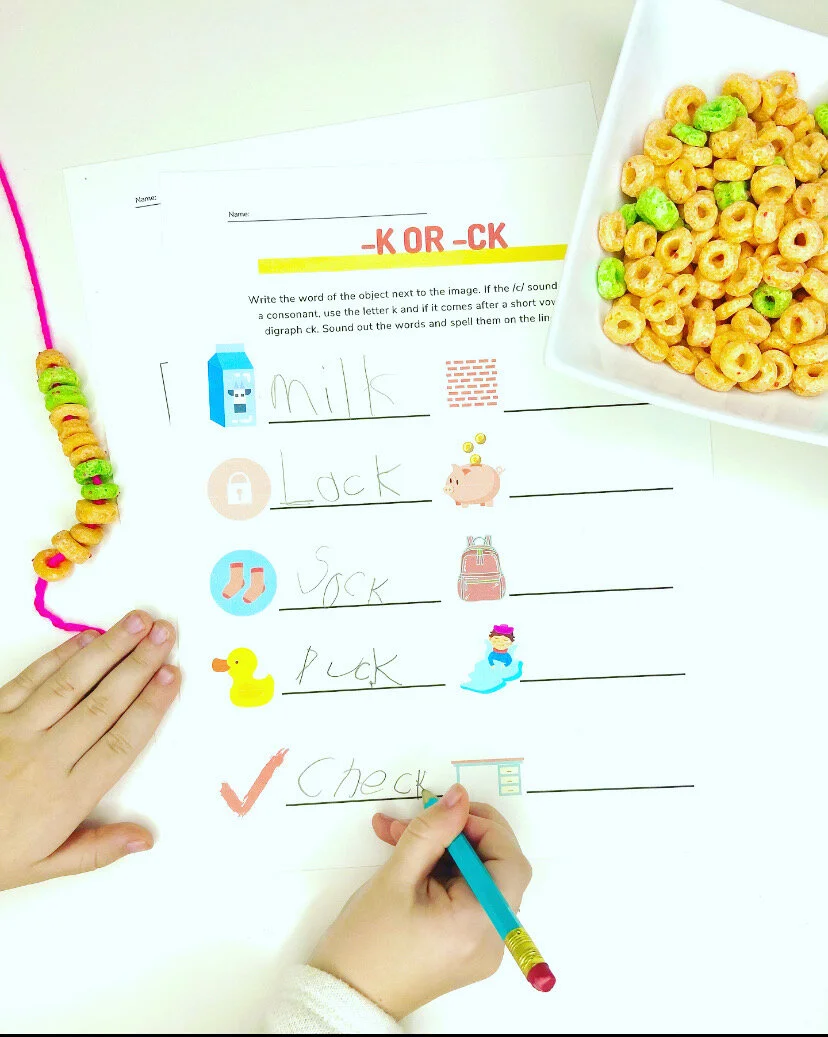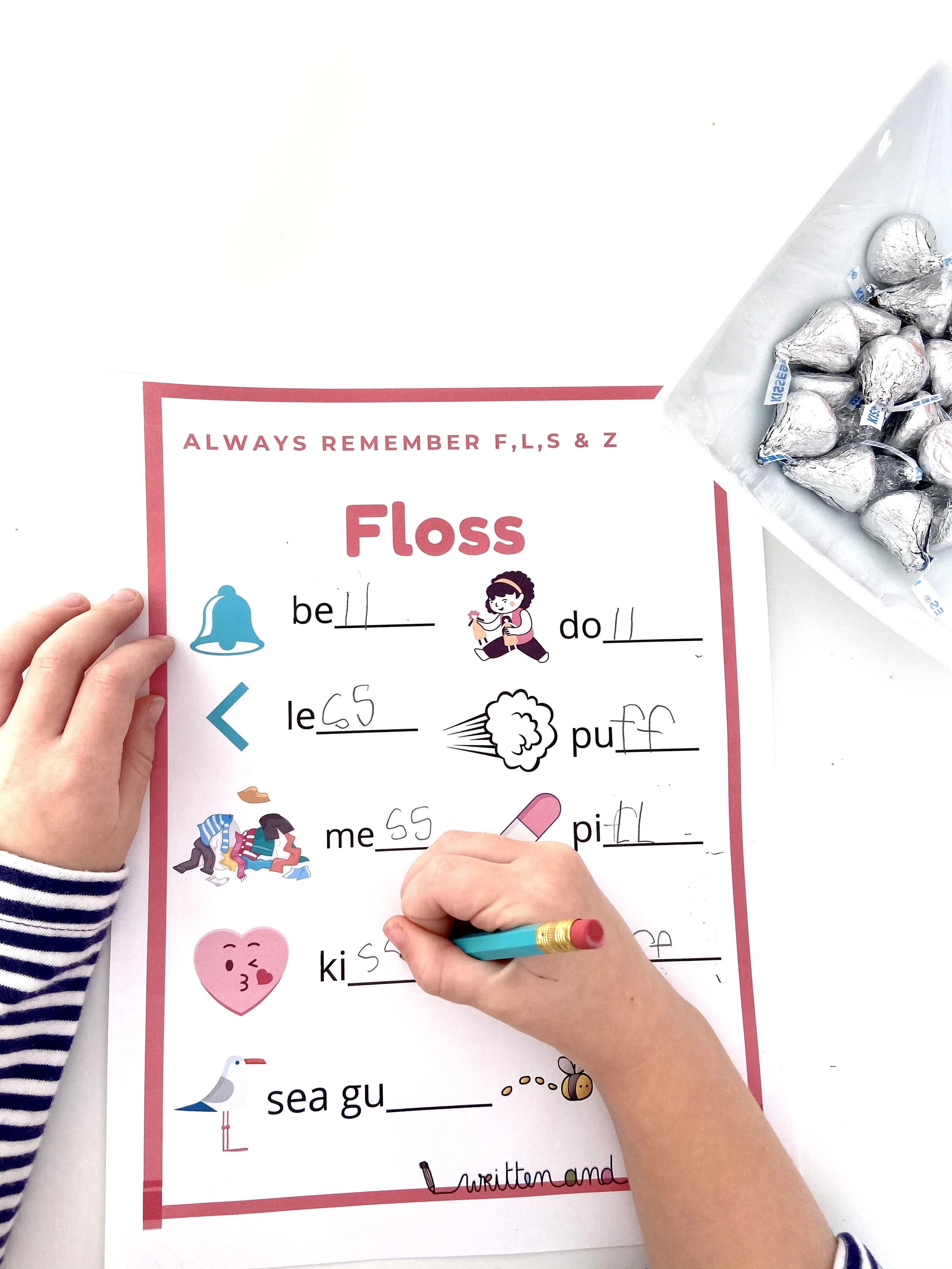Must-Haves To Boost Reading Confidence
/One of the things I love most about being a reading specialist is watching a child who is struggling in school start to feel proud and confident in their abilities. This change usually has little to do with me or my teaching and a lot to do with providing the correct materials. Rather than utilize flashcards and reading drills, it's more fun and usually more beneficial to start by helping children see themselves as readers. Adding "reader" to their self-image will spark enthusiasm, much like buying workout clothes before working out. Let them feel a sense of ownership by picking out a library tote or helping to create a reading nook in your home. To make your life easier, below are a few essentials to help you get started.
If you want the short list for your Amazon order, pile these items in your cart: Short Vowel Decodable Books, Golf pencils or crayons, phonics blocks or CVC letter cubes or Bananagrams, a personal notebook or fill-in journal and a tray for practicing sight words (acts as a simpler version of this teaching material) sand for practicing sight words. If you are curious about the reasoning behind each item and a few choices, please keep reading.
Bananagrams - Before there was instagram, there were Bananagrams! I recently picked up My First Bananagrams set for my own four-year-old and while she is not reading yet, we love playing with them. My favorite part of the "My First" set is that the vowels are all on yellow tiles. So you can easily help kids start creating and spelling on their own by teaching them about three letter consonant, vowel, consonant words.
Decodable Short Vowel Books - Giving a beginning reader a book that is too difficult for them is like walking into the advanced Zumba class when it's your first time to the gym. You would leave feeling defeated and overly exhausted. So providing the correct types of books for beginner readers is pretty important. Decodable books are designed for students to learn a single concept at a time. Choose readers that are labeled, "Beginner, set one or short vowels." Once your child has mastered short vowels then they can move on to sight words and long vowels. The most popular series are BOB books or decodables that incorporate popular characters, such as Pinkalicious and Lego Super Heroes.
CVC word rod - These toys help children build three-letter words containing a short vowel. As they learn to decode, your children will have a lot of fun manipulating words. These rods and blocks will help them practice one vowel at a time and change words like mat to hat or top to mop. When your child is ready to build words independently, try these phonics cubes.
A personal notebook - Any journal or simple notepad will do. Encouraging a child to write however they wish, to make lists or draw pictures, will spark creativity and deepen their understanding of the purpose of writing. This fun fill-in the blank journal provides some structure and fun writing prompts.
Small pencils and crayons - Did you know that when a child is learning how to write they benefit from using small golf-sized pencils? It goes against the popular belief that a child needs a large pencil. Actually, the larger pencils and crayons are designed for infants and babies who grasp with the palm of their hand. When a child is learning to read and write, the formation of the letters and motor skills can have an affect on his or her reading ability as well. By providing small pencils kids more easily practice proper pencil grip.
Sand or tactile materials - High frequency words make up approximately 65% of all written text, so we want to help children memorize these words to make reading easier. As a child begins learning letter formation and sight words, it's helpful for them to practice spelling through a multi-sensory experience. Plainly said, they need to incorporate their entire body and senses to transfer the information into their long-term memory. The sand box linked above is helpful because the colored bottom makes the letters and formation stand out. It also comes with a lid to keep the sand from spreading throughout your house but any tray will do the trick!
Reading and Speaking Phone – This simple tool allows kids to read or speak into it to hear their own voice. Similar to when an adult records a presentation or an upcoming speech, this phone allows a child to practice reading and receive immediate feedback by listening to their own voice while reading. It improves mispronunciations and comprehension and also can help a child improve fluency.
Highlighting Strips – These fun strips act as a bookmark, highlighting the line a line of text so the child can more easily gain fluency and accuracy.
Starting with these items will help you create excitement around reading. It also will help you, as a parent, feel more informed and confident in assisting your child. Consider wrapping the items in a fun package or gifting them for a special event. As always, feel free to email me with questions or thoughts on ways to help your little reader at writtenandbound@gmail.com.
This post contains affiliate links. Thank you for your support!


























